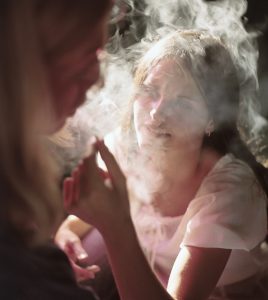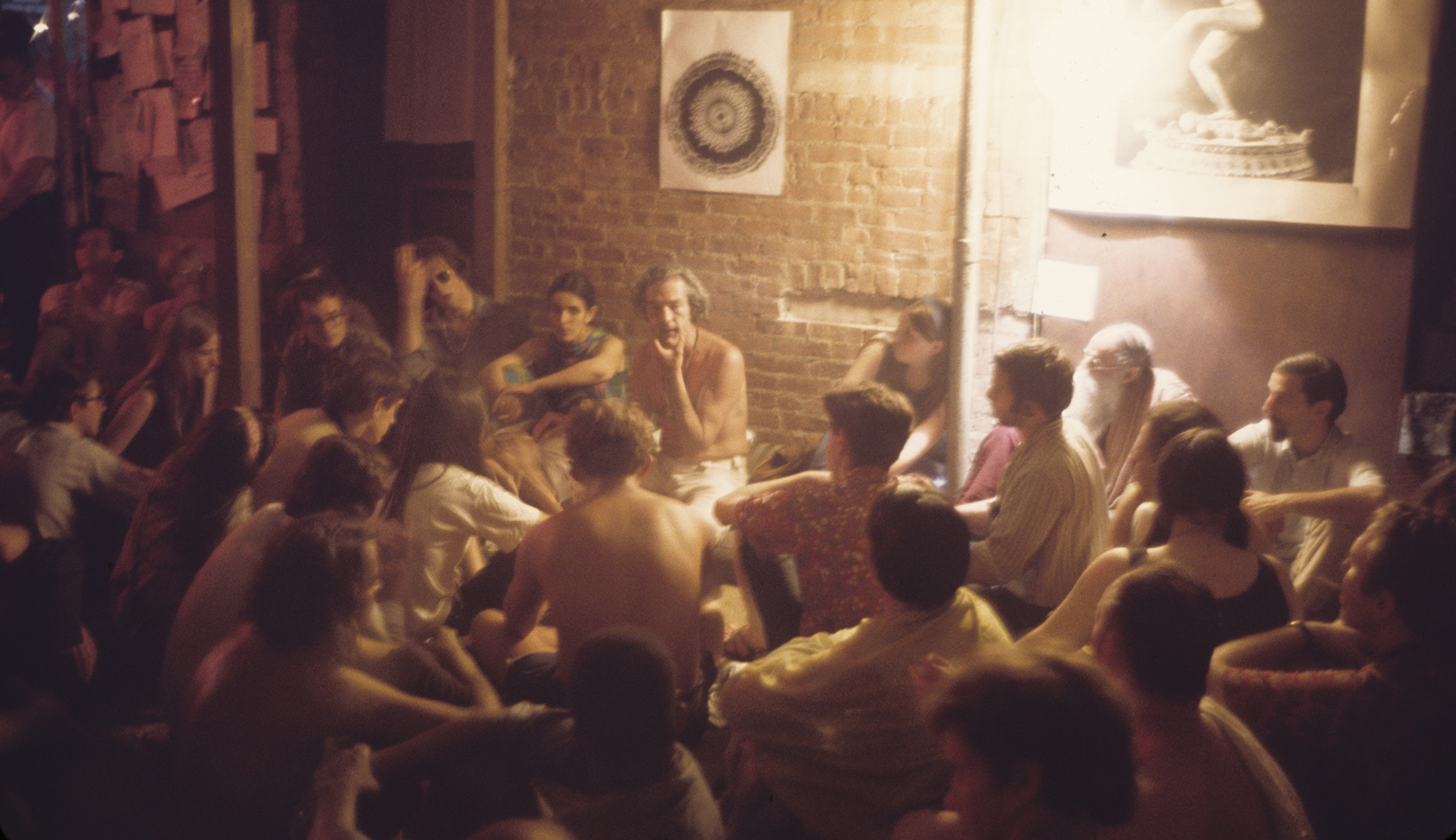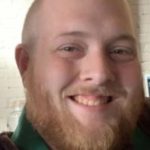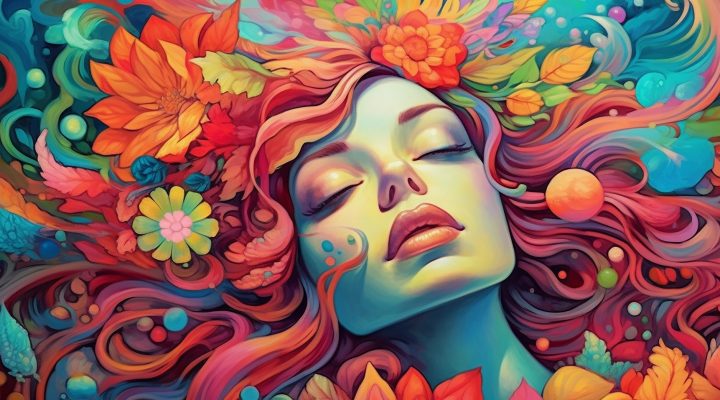The Psychedelic Renaissance has arrived.
From Blue states like Oregon and Colorado to conservative stalwarts including Utah and Texas, bills to make psychedelics legally accessible are spreading quickly.
Stereotypical drugs from 1960s and 1970s counterculture like magic mushrooms, mescaline and LSD are numbered among these substances, along with relative newcomers like 5-MeO-DMT and 2C-B.
The flood of interest in these substances is primarily derived from their demonstrated potential to treat mental and physical illnesses including PTSD, depression and addiction. However, there is another element involved in their popularity as well. Psychedelics have a reputation for inducing powerful spiritual experiences.
In both clinical and recreational settings, psychedelic drugs set into motion the “trip.” Ingesting these substances can cause ineffable changes to one’s senses, cognition and sense of self that resemble mystical experiences. Indigenous cultures have used psychedelic substances like magic mushrooms and peyote to interact with spiritual realms for thousands of years, and spiritual experiences continue to be relevant in medical research today.
Spiritual experiences
In one Johns Hopkins study, more than two-thirds of subjects said their psychedelic trip was one of the top-five most important spiritual experiences of their lives. This has led some psychedelic researchers to hypothesize that mystical experiences are not just a byproduct of the psychedelic experience. They are the means by which psychedelics heal.
To someone who never has ingested psychedelic substances, the testimonies or “trip reports” of these experiences may seem unbelievable. The first effects of a moderate or high dose psychedelic trip are subtle. Colors become more vivid, synesthesia begins and time becomes distorted. As the psychedelic trip progresses, all-encompassing hallucinations of changing colors, shapes and sounds may emerge. Within these vivid altered states of consciousness, people have reported meeting Jesus Christ, traveling on cosmic journeys of flying through heaven, visiting infinite Buddha-fields, and a variety of other ineffable occurrences.
“These overwhelming psychedelic trips have the capacity to shake up our core religious beliefs about the world.”
These overwhelming psychedelic trips have the capacity to shake up our core religious beliefs about the world. A Johns Hopkins survey of psychedelic users found belief in the afterlife and spiritual beings like angels increased by about 30% after a powerful trip. Belief in panpsychism, the idea that all the universe has capacity for or contains consciousness, nearly tripled.
Political displacement
But spiritual beliefs are not the only aspect of one’s identity that could be altered by psychedelic encounters. Our political philosophy, the beliefs we hold about how to best construct a society, can be altered as well.

(Getty Images)
Of course, a renaissance is a rebirth, the renewal of something lost. Our own 21st century Psychedelic Renaissance is a partial rebirth of the 1960s and 1970s in America. At that time, these drugs were associated with a counterculture of sexual revolution, radical Leftist politics and a general distrust of traditional authority.
As other Christian advocates and I have discussed the Psychedelic Renaissance in church settings, I have noticed something is missing. Christians do not yet recognize the potential political displacement that can emerge from psychedelic use.
Psychedelics are only one aspect of a far larger cultural shift already occurring. A walk through stores like Urban Outfitters or Five Below demonstrates youth culture is returning to the symbols and aesthetics of the 1960s and 1970s. Instead of creating new symbols, it is easier to return to symbols that came during a previous period of widespread sociopolitical upheaval. Instead of free love, the chatter is about polyamory. Instead of a war abroad stealing young American lives, the national tragedy is routine mass shootings.
Psychedelics were a common way to engage with this social destabilization 50 years ago. Since more than 8% of young adults report past-year psychedelic use, they may be such a force today.
“It may be that psychedelics can open someone to radicalization within a familiar ideology.”
While some studies have demonstrated a weak link between psychedelic experiences and anti-authoritarian attitudes, there is no evidence psychedelic experiences can change one’s political affiliation directly. However, it may be that psychedelics can open someone to radicalization within a familiar ideology.
Studies have demonstrated psychedelics may increase one’s openness to new ideas and concepts. Moreover, the previously mentioned Johns Hopkins survey about changes in metaphysical beliefs includes another relevant point: 36% of respondents said the psychedelic experience led them to believe “there is a hidden or deeper purpose to life and all of existence about which many people are unaware.”
Once one has seemingly encountered God or entered the heavens, it is hardly surprising they decide there is more to life than building an investment portfolio so they can comfortably retire and die in a nursing home. After such experiences, one may begin seeking this deeper purpose to life in radical groups that defy conventional norms beyond mainstream institutions.
This is especially the case for recreational psychedelic users, who already are designated as felons by the U.S. government and alienated from mainstream society and organized religion.

American psychologist and writer Timothy Leary (1920 – 1996) at the League for Spiritual Discovery, an LSD-based meditation center on Hudson Street in Greenwich Village, New York City, 1967. (Photo by Ben Martin/Getty Images)
Timothy Leary
Psychedelics were intricately linked with American counterculture elements ever since Timothy Leary, the self-proclaimed “High Priest of LSD,” encouraged young hippies to “turn on, tune in and drop out” of mainstream society in 1966. Instead of the traditional path, Leary said people should explore communal lifestyles, free love and creative protest. Later psychedelic revolutionaries continued to foster this anti-establishment political and religious attitude. Some, like legendary psychonaut Terence McKenna, even preached of an inevitable apocalyptic showdown with an oppressive, closed-minded federal government in which the forces of the loving, peaceful counterculture would win.
This does not mean psychedelic epiphanies always led to peace, love and understanding. They also can lead to terrorism and hatred.
In late 1969, the Leftist terrorist group Weather Underground began a series of bombing campaigns, including attacks at the United States Capitol in 1971 and the Pentagon in 1972. Two Weather Underground communiques from 1970 mention drugs, declaring “LSD and grass, like the herbs and cactus and mushrooms of the American Indians… will help us make a future world where it will be possible to live in peace. Now we are at war.”
While working with the Black Panthers and a psychedelic group named Brotherhood of Eternal Love, the Weather Underground also was responsible for breaking Timothy Leary out of prison.
Likewise, it is often forgotten that the Manson Family, responsible for the murder of nine people, was a racist and Neo-Nazi political cult, not just a religious one. Cult leader Charles Manson believed he was destined to ignite a race war in America and rise from its ashes as a king over Black Americans. LSD played a prominent part in the cult’s practices, reinforcing the sects’ racist beliefs and actions during Manson’s indoctrination rituals.
Since the beginning of the current Psychedelic Renaissance, we have seen some inklings of this same political extremist phenomenon. Particularly, some white supremacist domestic terrorists have become associated with psychedelic substances.
In 2020, three members of a Neo-Nazi militia called The Base were arrested while trying to synthesize the psychedelic drug DMT. Publicized text messages from a Neo-Nazi member of the Atomwaffen Division, a Manson-influenced Neo-Nazi group, also reveal a specifically religious connotation to psychedelics. While searching through online white supremacist forums like Stormfront, I have found a plethora of hateful ayahuasca drinkers and violent acid droppers.
“We are in an age of staggering instability and misinformation which fuels escalating ideological terrorism.”
Of course, these violent or hateful political associations are not an inherent or even particularly common result from psychedelic drug use. The vast majority of psychedelic users, including those who believe in a hidden deeper purpose, do not engage in hatred or violence. Most are part of mainstream religions or eccentric-yet-harmless new religious movements. However, the fact remains that we are in an age of staggering instability and misinformation which fuels escalating ideological terrorism. Without the support of a trustworthy community, those who open their minds to seek meaning after a psychedelic trip may end up under the influence of bad actors.
A Christian opportunity
In the midst of this psychedelics-engendered metaphysical and existential upheaval, Christians have a unique opportunity to offer safe harbor for meaning-seekers. However, we cannot do this by offering the same old solutions to ever-increasing crises. Only extremism can be a rational response to the failures of moderation. The real question, to quote Dr. King, “is not whether we will be extremists, but what kind of extremists we will be. Will we be extremists for hate or for love?”
Self-soothing activism and self-congratulating sermons are not nearly enough. In the face of apocalyptic climate change, bigoted militias and the erosion of democracy, we must offer risky action that actually challenges the status quo and empties ourselves of institution-preserving wealth for the sake of the poor and marginalized. To psychedelic subculture and our culture as a whole, the church must offer an extremism of love: a radical Jesus-following counterculture.
“The 1960s and 1970s also were marked by a unique kind of Christian counterculture that directly appealed to psychedelic users.”
Looking to the past, we can find inspiration for present endeavors. The 1960s and 1970s also were marked by a unique kind of Christian counterculture that directly appealed to psychedelic users. For most, this did not explicitly include psychedelics.
Father Daniel Berrigan made his mark through fiery words in “Quotations from Chairman Jesus” and other revolutionary speeches and publications, but these were not mere words. He and the other Catonsville Nine raided a Vietnam draft office and burned their records in the name of Christ’s peace. This action won them the ear of a nation, and it made him a fugitive. Berrigan’s peace signs and cool demeanor in arrest photos would have meant nothing to hippie onlookers without his radical actions and sacrifice.
Some Christians chose to closely integrate their radical socio-political gospel with psychedelic subculture. In the 1960s, a small group of evangelicals began converting to Christianity after LSD-fueled visions. In 1967, some of these self-proclaimed Psychedelic Christians founded The Living Room, a commune and mission in the Haight-Ashbury neighborhood of San Francisco. Despite its Flower Power reputation, this infamous hippie region was haunted by thousands of isolated young adults facing sexual abuse, drug overdose, food insecurity, homelessness and predatory cult leaders. The Psychedelic Christians intended to intervene in this dark situation.
Unfortunately, The Living Room lasted less than two years before conservative funding dried up as a result of inaccurate, negative press coverage. Yet, this experiment had a profound and lasting impact. Nearly 20,000 people received spiritual and physical care in that short period. Even aforementioned cult leader Charles Manson spent time at the mission before it became quite clear his message was not welcome.
Yet through all this, drug use was still welcome, or at least tolerated. Sharing a social marijuana joint was accepted as a means of outreach. Even as some members began moving away from LSD use in a communal environment, they did not condemn it outright.
‘Extremists for love’
While some may have misgivings about the Psychedelic Christians’ evangelistic model or the Cantonville Nine’s outright arson, these examples should nonetheless spark our imagination. As a result of psychedelic drug use, people are emerging out of the fatal slumber of consumption-driven materialism to ask, “Is this really all there is?”
They cannot quietly rejoin the shambling sleepwalkers on their way to global climate crisis, social disintegration and wasted or exploited lives. While it is essential to wrestle with the theological questions that psychedelic trips may pose, that is not enough. We cannot become “so heavenly minded that we are of no earthly good.” We must offer a radical Christian ethic of life. We must be “extremists for love.”
One common element of the psychedelic experience is a complete sense of unity and overwhelming love for and from the world around us. That love for our neighbor and creation we call “gospel” is not owned by any cactus, mushroom, or chemical. It is accessible to all through a daily, mundane life committed to our Lord and God Jesus Christ.
Once one has truly known that love, it is etched onto our bones like chisel to tablet or nail to cross, and we cannot continue business as usual. We must speak. We must act. We must show seekers a path worth following.

Kaleb Graves
Kaleb Graves is a CBF minister and educator living in North Carolina. He earned a master of divinity degree from Duke Divinity School in 2023 and is currently pursuing a master of arts degree in psychology.
Related articles:
Is your church ready for the spiritual revolution of LSD, DMT and magic mushrooms? | Analysis by Kaleb Graves
What an experiment with psychedelics 60 years ago might teach us about faith today | Analysis by Kaleb Graves
‘God’s plant’ has cured kids, now the new frontier is psychedelics


